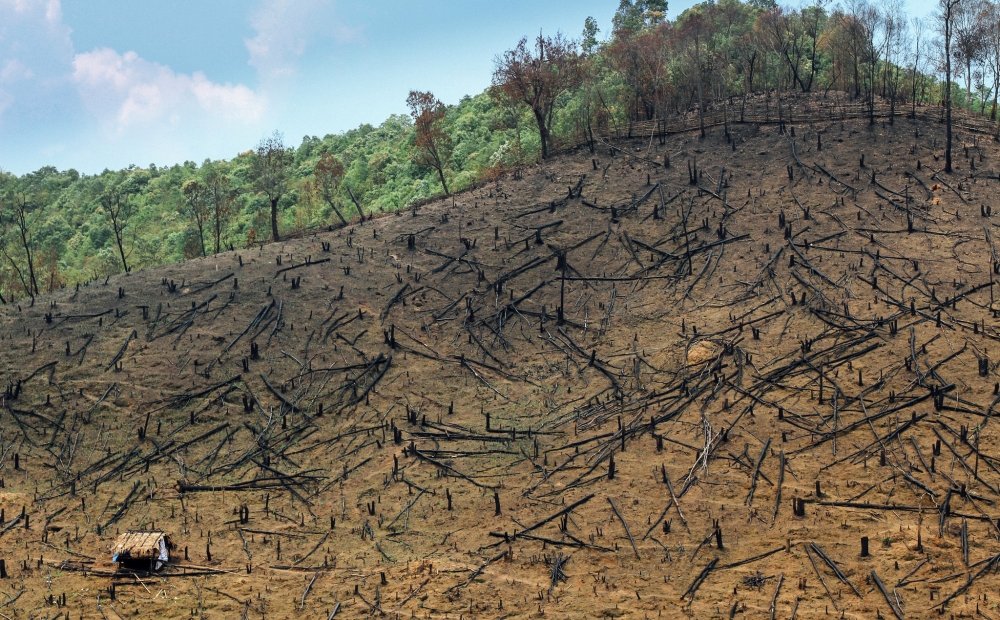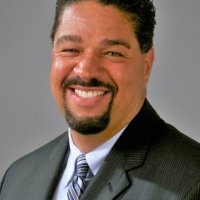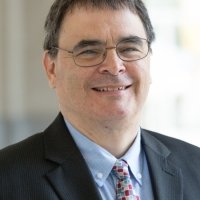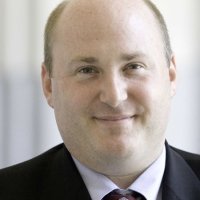15 Years of Environmental Peacemaking

As the 1990s drew to a close, there was a sense that much of the momentum gained at the first Earth Summit on sustainable development, a positive, affirming environmental narrative, was waning.
With the end of the Cold War and subsequent increase in civil wars, there was growing concern among governments about resource scarcity contributing to violent conflict. In the academic community too, many researchers were focused primarily on the environment-conflict link. By the end of the decade, many academic debates were bogged down in methodological fights and the policy world turned to other perceived threats when resource scarcity links to conflict or state failure proved complex and uncertain.
In response, Ken Conca, then an associate professor at the University of Maryland, and Geoff Dabelko, then director of ECSP, co-edited Environmental Peacemaking (2002) in part, they said on February 22, to counter this “securitization” narrative and highlight the fact that natural resources can also be sources of cooperation.
Fifteen years after the book’s release, the international community is grappling with record levels of displacement, increased resource stress, accelerating climate change, and stubborn conflicts – and the debate over how the environment is connected to violence is hotter than ever. At the same time and with much less fanfare, the core idea of environmental peacemaking, that environmental interdependence and the need to cooperate over resources can be a motivation to build confidence and perhaps peace, is increasingly a strategy deployed by governments and non-governmental organizations in diverse settings.
The editors returned to the Wilson Center to discuss the book’s initial reception, how the field of environmental security has evolved in both research and practice, and where the research and policy agendas are going next.
Conflict or Cooperation?
The common environment-conflict paradigm was and is fairly simple, said Conca: “Resource scarcity or ecosystem disruption creates grievances, and grievances create violent conflict.”
But Conca thought that was too simple. That’s not how violent conflict works, he said, and it recasts environmental issues in security terms, which can exacerbate the unequal power structures between developed and developing countries at a time when a “North-South bargain” is needed.
Rather than focusing on the potential environmental triggers of conflict, Conca and Dabelko convened a group of authors to outline case studies that illustrate how environmental dynamics have been used to create mutually beneficial opportunities. The cases, from Africa, Asia, Europe, and North America, presented examples of managing the environment in “ways that are proactively trying to build trust, confidence, and ultimately peace,” said Dabelko.
There is a “logic of interdependence around natural resources that ignores boundaries”
Since the book’s release, the concept of environmental peacemaking has gained traction in some circles but still runs up against resistance in others. Some non-governmental organizations avoid using “peacemaking” terminology because the security context can complicate their work, as Conca predicted. The United Nations Environment Program (UNEP) frames its activities as “peacebuilding,” for example, reflecting its focus on the post-conflict arena.
Since environmental peacebuilding is not a traditional field of study, what has continued to plague the research side is the challenge of convincing scholars from a variety of related fields – conflict studies, environmental science, international development – that there is a “logic of interdependence around natural resources that ignores boundaries,” said Dabelko.
Expanding one-dimensional understandings of the environment and peace, traditionally seen as two separate entities, better enables scholars and practitioners to “address conflict in a proactive way together,” he explained.
States themselves must accept that they are in long-term sustained engagement over shared resources with their neighbors, said Conca, and it is in their best interests to “cooperate and keep the peace.”
Beyond the Technical
“We need to put opportunity and peace back at the center of our research, but also in the practice,” said Florian Krampe, a fellow at the Research School for International Water Cooperation at Uppsala University, Sweden. Krampe has studied the complex effects of environmental interventions in post-conflict Nepal and Kosovo.
In Nepal, Krampe tested the hypothesis that the provision of environmental services helps rebuild the relationship between society and state after civil war. Looking specifically at small hydropower projects designed to bring electricity to rural villages, Krampe found significant positive impacts at the community and individual levels. With development came empowerment for women, better access to education, and increased community cohesion.
But Krampe did not find increased trust in the state. In a post-conflict environment, such trust can be a proxy for peace, Krampe said, given how important it is to prevent relapses into violence. The argument could be made then that these hydro projects, despite their positives, have had a negative effect on peace by strengthening informal and local institutions at the expense of the state, he said.
In Kosovo, Krampe has studied how the United Nations peacekeeping mission handled water management after fighting ended in 1999. The UN approached water problems through a technical lens in Mitrovica, a city split between factions in favor of independence and remaining part of Serbia. Rather than confronting the difficult but necessary challenge of trying to bring the two sides together, the UN hired German engineers to manage the system and created two separate water companies, one for each side.
More than a decade later, many of the same problems remained. “What we learned from Kosovo is that the way it was handled actually consolidated separation of the communities,” reflected Krampe.
Reshaping Decision-Making
Kim Suiseeya, an assistant professor in the Department of Political Science at Northwestern University, is examining how environmental interventions formulated for global problems are playing out at the local level.
REDD+ is a mechanism under the UN Framework Convention on Climate Change that aims to reduce emissions from deforestation and forest degradation by transferring payments for carbon from rich nations to poor nations. While well-intentioned, the program is predicated on clear land tenure rights – “someone must own the forest so that they can sell the carbon,” Suiseeya said. For many places where REDD+ projects are being considered, this is not the case.
In Laos, for instance, where Suiseeya has done research, most rural people have no legal ownership of the land they work. The government taking part in REDD+ then could mean displacing people against their will and eroding informal institutions, potentially leading to conflict. Nearly 86 percent of Laotians rely on forests for food or their livelihoods, she said.
Practitioners need to think of justice not as the “equitable distribution of payment for some service or some good,” Suiseeya said, but in terms of “reshaping the decision table.” Redistributing the diversity and weight of those voices at the table challenges the notion that policymakers can dictate the framework for discussion without first asking “what that discussion should really look like.”
When a Straight Line Is Not the Best Answer
Suiseeya argued that the redistribution of power over forests is a way to build social cohesion, which is ultimately what environmental peacemaking is aiming for – “to ensure that communities are resilient, that they can adapt to change, [and] can do so in a way that doesn’t leave some behind.”
By redirecting attention and power to communities and activists, practitioners can move beyond institution building and toward establishing a “democratically centered sense of wellbeing that persists at the very local level,” she said.
Water and sanitation programs run by EcoPeace Middle East, for instance, have brought together Israeli, Jordanian, and Palestinian communities that abut one another, said Dabelko. Communities sharing the same watersheds are motivated to ensure that wastewater gets treated because children from all sides are impacted. While this intervention will not solve the Israeli-Palestinian conflict, Dabelko noted it’s a “meaningful” trust- and confidence-building avenue that directly affects thousands of people.
In some ways, environmental peacebuilding is more widespread than ever, it’s just not always thought of in those terms. Krampe pointed out that there are hundreds of international and government organizations working on projects that affect the environment in post-conflict arenas.
Many humanitarian and development organizations in these fragile places have tried to “depoliticize” their environmental work by stressing technical approaches, said Conca, but this ignores the political nature of natural resource management.
It would be advantageous, for instance, if UNEP not only had soil chemists on staff but sociologists too, he said. “If you don’t understand what’s going on at the household level and at the community level, the soil chemistry is just knowledge you can’t act upon.” Such diversity in skill sets and approaches has become more common over the years at UNEP and similar organizations but is still underappreciated in some sectors.
Krampe urged policymakers to marry the technical side with political expertise to take full advantage of the peacebuilding potential of natural resources – and at least avoid doing harm. “Maybe the best way to build a pipe between A and B is not a straight line, but a very complicated curve,” he said.
Event Resources:
Written by Sreya Panuganti, edited by Schuyler Null.
Cover Photo Credit: Pang Hoc, Laos, courtesy of flickr user Adam Cohn.
Moderator

Vice President, Sustainable Markets, Pact
Panelists


Professor and Associate Dean, George V. Voinovich School of Leadership and Public Affairs, Ohio University; Associate Senior Fellow, Environment of Peace Initiative, Stockholm International Peace Research Institute
Hosted By

Environmental Change and Security Program
The Environmental Change and Security Program (ECSP) explores the connections between environmental change, health, and population dynamics and their links to conflict, human insecurity, and foreign policy. Read more
